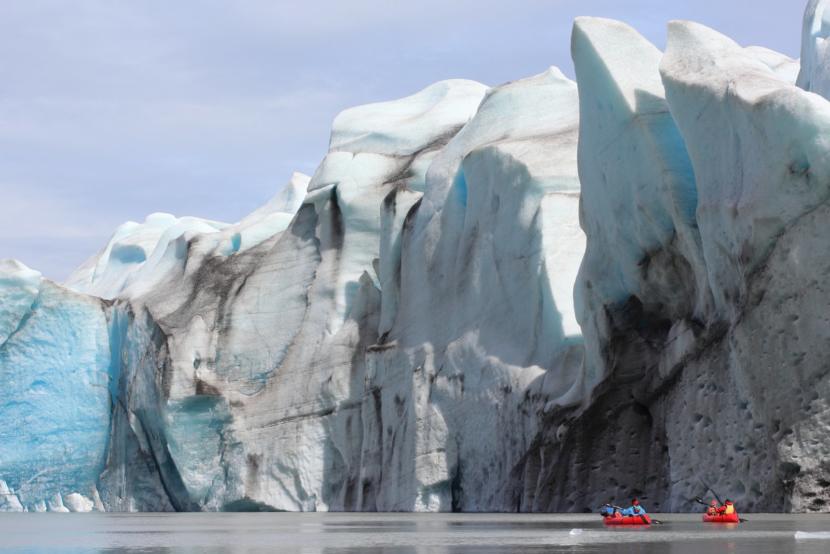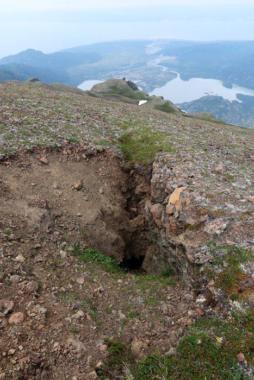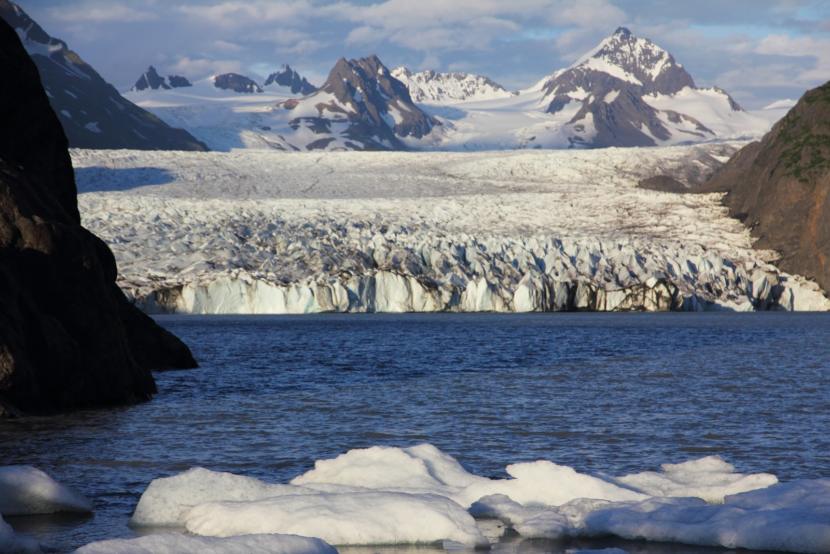
One of the most popular landmarks in Kachemak Bay State Park is a glacier that’s becoming increasingly unstable. Scientists say climate change is raising the threat of landslides and tsunamis.
All year round, Dave Lyon transports hikers and day-trippers in his water taxi from Homer’s harbor to Kachemak Bay State Park. He said Grewingk Glacier is a top destination.
“They usually just love it,” Lyon said. “It’s beautiful. A lot of folks will swim in the lake and swim out to icebergs and climb up on ‘em, and they just say it’s a spectacular experience.”
The glacier flows into a wide lake which is surrounded by mountains. Lyon said he takes visitors from all over the world to see it.
“You’re going to be out there with maybe 30 to a hundred of your best friends on a given day in the summer,” he said. “It’s a crowded trail.”
But there’s cracks in the mountain slope beside the glacier. The rock there is weak and at risk for falling into the lake — that’s what happened in 1967. Lyon wasn’t there at the time, but he’s heard about it.
“It was a cataclysmic event, and Homer could hear it, and it was like a rumbling explosion,” he said. “It was the entire side of the mountain falling into the water.”

Scientists agree this landslide was one for the books.
“It would be in the list of probably the top 10 landslides that happened anywhere in the world in the 20th century,” said geologist Brentwood Higman.
Luckily, no one was there for the landslide and tsunami back in the late 60s, Higman said.
But things are different now. More visitors are at the glacier, which is receding. And with the retreating ice, so follows the natural buttress for the mountain rock beside it. More melting ice also means more water in the lake. So when rocks fall into the lake, it could make for a bigger wave.
That’s not to say there’s any certainty that a large landslide and tsunami will happen. But the possibility of more rains brought by more extreme weather — driven by climate change — makes Higman nervous.
“I mean we all take risks in life,” he said. “I think it’s worth going up to Grewingk Lake. I’m not really suggesting people don’t do that. I would suggest that camping on the beach is maybe not a good idea.”
In the meantime, he and his colleagues hope to get the tools to predict the next big slide.

“You can look for clues that suggests things might be starting to move,” said Ed Berg. He teaches geology at Kenai Peninsula College.
Berg said scientists in Europe are already monitoring mountains for landslides. If a mountainside is shifting at a measurable rate, that’s a bad sign.
“Then that would be a sign that it’s going to fail sooner or later,” Berg said.
Back at his water taxi, Lyon said a potential slide isn’t going to deter him.
“It’s a great hike, and what am I going to tell people? Stay home, be afraid, don’t go outside?” he asked.
He’s just returned from Kachemak Bay State Park, where he’d taken a load of day-trippers. His large brown dog Pica is at his side.
“There’s only so much time left to experience some of these great things that we have here before our world changes irrevocably,” he said.
In the meantime, he said it’s important to share the place with others.
